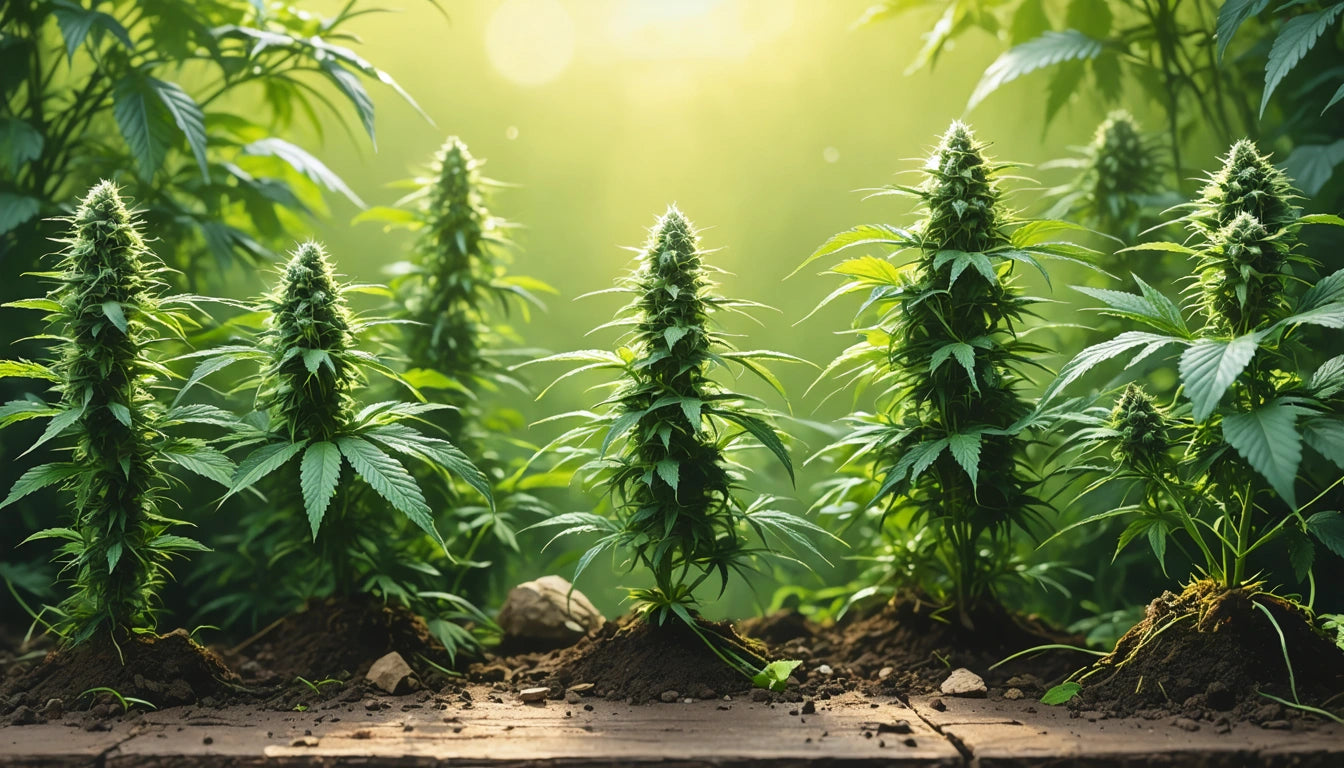Table of Contents
Autoflowering vs. Photoperiod: Choosing the Right Cannabis Plant for Beginners
For novice cannabis cultivators, one of the first and most important decisions is choosing between autoflowering and photoperiod plants. This choice affects everything from the growing schedule to the final yield, making it crucial to understand the differences before starting your growing journey.
Understanding the Basics: Autoflower vs Photoperiod
Autoflowering cannabis plants automatically transition from vegetative growth to flowering based on age, regardless of light exposure. These plants contain Cannabis ruderalis genetics, which evolved in regions with short growing seasons and unpredictable light conditions.
Photoperiod plants, on the other hand, rely on light cycle changes to trigger flowering. In nature, they begin flowering when days shorten and nights lengthen, typically in late summer. Indoor growers must manually adjust light schedules to initiate flowering, usually switching from 18 hours of light to 12 hours.
Key Differences Between Autoflowering and Photoperiod Plants
Growth Cycle
Autoflowers have a predetermined lifecycle, typically completing their entire growth cycle in 8-10 weeks from seed to harvest. According to this comprehensive timeline guide, most autoflowers begin flowering around week 3-4 regardless of light conditions.
Photoperiod plants have two distinct phases: vegetative growth (under 18+ hours of light) and flowering (under 12 hours of light). Growers control when to switch phases, allowing for longer vegetative growth if desired.
Size and Training
Autoflowers generally grow smaller due to their short vegetative period and ruderalis genetics. This makes them ideal for limited spaces but limits training options.
Photoperiod plants can be trained extensively through techniques like topping, low-stress training (LST), and SCROG (Screen of Green). While some autoflowers can handle gentle training, careful consideration is needed when topping autoflower plants to avoid stunting their growth.
Pros and Cons for Beginners
Autoflowering Advantages
- Faster harvest cycles (8-10 weeks total)
- No need to adjust light schedules
- More forgiving with light leaks
- Compact size ideal for stealth growing
- Multiple harvests possible in one season outdoors
Photoperiod Advantages
- Higher potential yields
- Greater control over plant size and growth
- Usually more potent (higher THC)
- Ability to take clones
- More time to recover from mistakes or nutrient issues
For beginners with limited space or those seeking a quick, straightforward growing experience, autoflowers often provide the path of least resistance. However, those looking to develop their cultivation skills might benefit from the learning opportunities that photoperiod plants offer.
Growing Requirements and Considerations
When comparing autoflower vs photoperiod for beginners, consider these key factors:
Light Requirements
Autoflowers thrive under a consistent light schedule, typically 18-20 hours of light throughout their lifecycle. Optimizing light conditions for autoflowers is straightforward but critical for maximizing yields.
Photoperiod plants require different light schedules: 18-24 hours during vegetative growth, then exactly 12 hours of darkness to flower. Any light interruption during dark periods can stress plants or cause hermaphroditism.
Space Considerations
Autoflowers typically reach 1-4 feet in height, making them suitable for closets, small tents, or balconies.
Photoperiod plants can grow much taller, especially during extended vegetative periods, potentially reaching over 6 feet outdoors. Indoor growers must plan for height management.
Yield and Potency Comparisons
While individual results vary by strain and growing conditions, general trends exist:
Yield Expectations
Autoflowers typically yield less than photoperiod plants due to their smaller size. However, modern autoflower genetics have improved significantly. Maximizing autoflower yields is possible with optimal conditions and genetics.
Photoperiod plants generally produce larger yields, especially when given extended vegetative time and proper training techniques.
Potency and Quality
Historically, autoflowers had lower THC levels due to ruderalis genetics. Modern breeding has largely closed this gap, with many autoflowers now reaching 20%+ THC.
Photoperiod strains still dominate the high-potency market, with some varieties exceeding 30% THC. They also tend to have more complex terpene profiles.
Beginner Recommendations and Starter Strains
For first-time growers, these considerations can help guide your decision:
Choose Autoflowers If:
- You want a quick harvest
- You have limited growing space
- You prefer a simpler growing process
- You're growing in regions with short summers
- Light control is challenging in your setup
Choose Photoperiod If:
- Maximum yield is your priority
- You want to practice training techniques
- You plan to take clones
- You have the space for larger plants
- You can control light exposure precisely
When selecting seeds, beginners should also consider comprehensive guides on autoflower seeds or detailed information about photoperiod seeds to make an informed choice.
Regardless of your choice, proper packaging and storage of your harvest is essential. Safety regulations for plant products often require child-resistant packaging similar to pharmaceutical standards, especially in legal markets where consumer protection is paramount.
Planning Your Future Growing Journey
Many successful growers begin with autoflowers for their first cycle to learn the basics, then experiment with photoperiod plants as they gain confidence. This progressive approach allows beginners to harvest quickly while learning, then apply those lessons to more demanding but potentially more rewarding photoperiod cultivation.
As you advance, consider maintaining both types in your garden: autoflowers for quick harvests and variety, and photoperiod plants for main production and cloning potential. With experience, you'll develop preferences based on your growing style, space limitations, and desired outcomes.
Whichever path you choose, remember that successful cannabis cultivation is about matching the plant type to your growing environment, schedule, and goals. Both autoflowering and photoperiod plants can yield excellent results when grown with proper care and attention to their specific needs.











Leave a comment
All comments are moderated before being published.
This site is protected by hCaptcha and the hCaptcha Privacy Policy and Terms of Service apply.